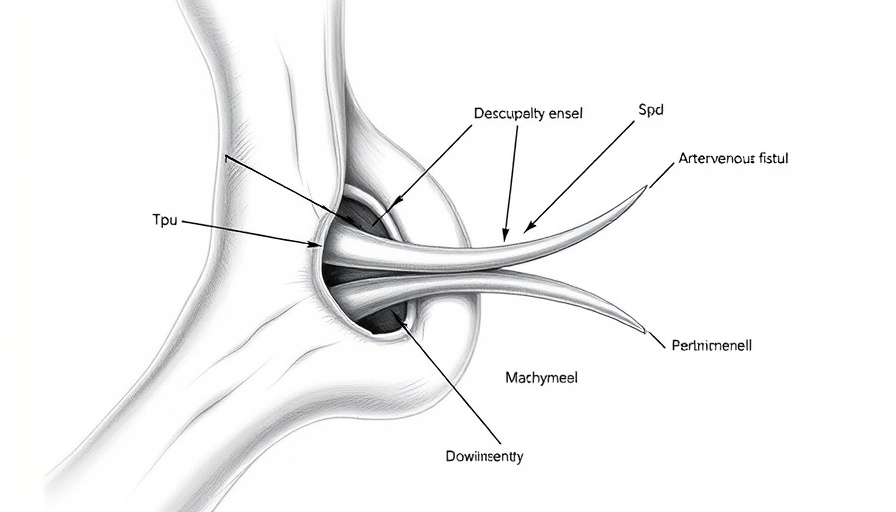
The Importance of Percutaneous Arteriovenous Fistulas in Dialysis
Recent practice guidance from the Society of Interventional Radiology (SIR) shines a spotlight on the essential role of percutaneous arteriovenous fistulas (pAVFs) in enhancing dialysis access for patients suffering from end-stage renal disease (ESRD). Recognized as a significant advancement, pAVFs allow for easier and more durable access to the bloodstream, which is crucial for effective dialysis treatment.
Guidelines Unpacked: What’s New?
This newly released guidance serves as a comprehensive blueprint for establishing a pAVF program. It encompasses patient preparation, the procedure's technical specifications, postoperative care, and management of complications. Over the last six years, since the FDA cleared this procedure, healthcare systems have incorporated pAVFs into practice, recognizing their benefits over traditional dialysis access points.
Enhancing Patient Outcomes
SIR President Dr. Robert A. Lookstein emphasized that the creation of durable hemodialysis access, like pAVFs, significantly enhances the quality of life for ESRD patients. As morbidity and mortality related to ESRD remain pressing global issues, implementing these recommended practices is critical in transforming patient care.
The Role of Interventional Radiologists
A central theme in the guidance is the recognition of interventional radiologists as vital contributors to the healthcare team. Their specialized skills not only improve the procedural aspects but also have long-term implications on patient outcomes. This acknowledgment promotes a collaborative approach to patient care, aiming to improve the overall healthcare experience for those undergoing dialysis.
Evidence-Based Practice
By encouraging interventional physicians to adopt evidence-based methods for fistula creation, the guidance aims to foster innovations in patient care. Such practices are anticipated to lead to reduced complications and a higher success rate in achieving effective dialysis access.
Conclusion: A Step Forward for ESRD Care
The newly established practice guidelines on percutaneous arteriovenous fistulas are more than just recommendations; they represent a strategic movement towards enhancing the treatment landscape for individuals with ESRD. With interventional radiologists at the forefront, the vision of improved patient outcomes is becoming a reality, moving healthcare one essential step closer to excellence in dialysis treatment.
 Add Row
Add Row  Add
Add 




Write A Comment